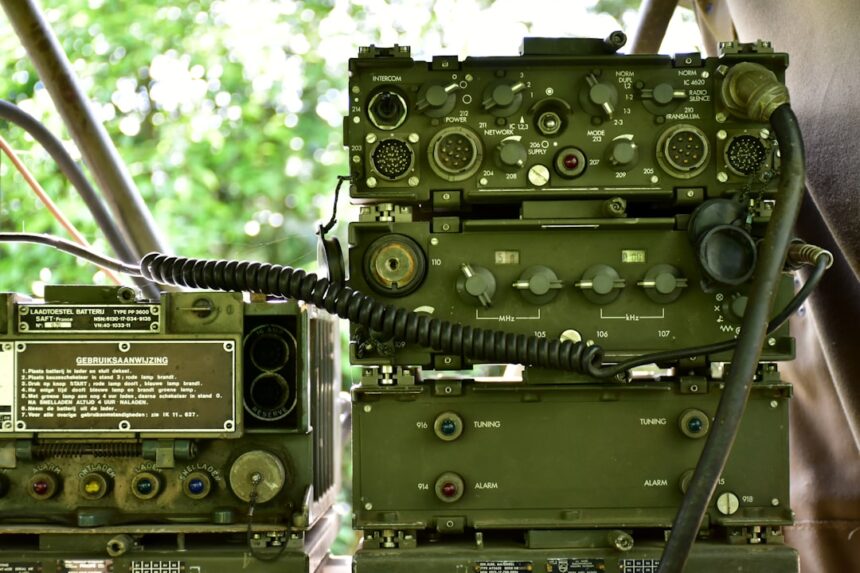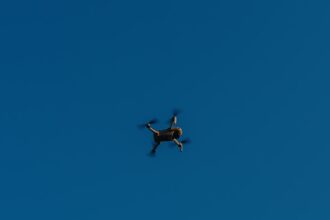The origins of military technology can be traced back to ancient civilizations, where the need for defense and conquest spurred innovation. Early weapons such as the spear, bow, and arrow were developed to enhance the effectiveness of warriors in battle. These rudimentary tools laid the groundwork for more sophisticated technologies that would emerge over the centuries.
The invention of metallurgy marked a significant turning point; the ability to forge stronger materials allowed for the creation of more durable weapons and armor. As societies evolved, so too did their military capabilities, leading to the development of siege engines and chariots that transformed the nature of warfare. In addition to weaponry, early military technology also encompassed strategies and tactics that were crucial for success on the battlefield.
The Greeks and Romans, for instance, made significant advancements in military organization and logistics, which were essential for managing large armies. The phalanx formation and Roman legions exemplified how strategic innovations could enhance combat effectiveness. These early developments not only shaped the course of battles but also influenced the political landscape, as powerful militaries often dictated the rise and fall of empires.
Thus, the early beginnings of military technology were characterized by a blend of physical tools and strategic thinking that would continue to evolve throughout history.
Key Takeaways
- The early beginnings of military technology can be traced back to ancient civilizations, where innovations such as chariots and siege weapons were developed for warfare.
- Industrialization had a significant impact on military technology, leading to the mass production of weapons and the development of new technologies such as machine guns and artillery.
- World War I played a crucial role in advancing military technology, with the introduction of tanks, aircraft, and chemical weapons changing the nature of warfare.
- World War II further influenced military technology, leading to the development of radar, jet engines, and nuclear weapons, which had a lasting impact on military strategy.
- The Cold War sparked a race for military superiority, leading to the development of intercontinental ballistic missiles, spy satellites, and other advanced technologies.
The Impact of Industrialization on Military Technology
The Industrial Revolution brought about profound changes in military technology, fundamentally altering the landscape of warfare. With advancements in manufacturing processes, armies could produce weapons and ammunition at an unprecedented scale. The introduction of rifled barrels improved the accuracy and range of firearms, while steam power revolutionized transportation, allowing for faster troop movements and supply lines.
This period also saw the emergence of ironclad warships, which rendered wooden vessels obsolete and changed naval warfare forever. The ability to mass-produce weapons not only increased the lethality of conflicts but also escalated the scale of wars, as nations could mobilize larger forces than ever before. Moreover, industrialization led to significant advancements in communication technologies that transformed military operations.
The telegraph allowed for real-time communication between commanders and their troops, enabling more coordinated strategies on the battlefield. This newfound ability to relay information quickly was crucial during conflicts such as the American Civil War, where it played a pivotal role in shaping military tactics. As industrialization continued to progress, it became clear that technological advancements were not merely supplementary to warfare; they were integral to the very nature of military strategy and operations.
The Role of World War I in Advancing Military Technology

World War I marked a watershed moment in the evolution of military technology, as it was characterized by unprecedented levels of destruction and innovation. The war saw the introduction of new weapons such as tanks, machine guns, and poison gas, which fundamentally changed how battles were fought. The tank, in particular, represented a significant leap forward in armored warfare, allowing forces to break through entrenched positions that had previously been impenetrable.
This innovation not only altered battlefield tactics but also highlighted the need for mobility in warfare. Additionally, World War I accelerated advancements in aviation technology.
The development of fighter planes and bombers showcased the potential for aerial warfare, leading to a race among nations to achieve dominance in the skies. The war’s brutal realities underscored the importance of technological innovation in military strategy, setting the stage for further advancements in subsequent conflicts.
The Influence of World War II on Military Technology
| Aspect | Impact |
|---|---|
| Aviation | Development of faster and more powerful aircraft, including jet engines and long-range bombers. |
| Naval Warfare | Advancements in radar technology, aircraft carriers, and submarines. |
| Tanks and Vehicles | Introduction of armored vehicles, such as tanks, and improved mobility and firepower. |
| Communication | Enhancements in radio technology and encryption methods for secure communication. |
| Medicine | Progress in medical technology, including blood transfusions, antibiotics, and surgical techniques. |
World War II further propelled military technology into new realms, with innovations that would shape modern warfare for decades to come. The conflict saw the widespread use of radar, which revolutionized detection and tracking capabilities, allowing for more effective air defense systems. Additionally, advancements in aircraft design led to faster and more maneuverable planes, significantly impacting aerial combat strategies.
The introduction of long-range bombers enabled nations to conduct strategic bombing campaigns that targeted enemy infrastructure and civilian populations alike. One of the most significant technological developments during World War II was the creation of nuclear weapons. The Manhattan Project culminated in the first atomic bombs, which were dropped on Hiroshima and Nagasaki, forever altering global politics and military strategy.
The devastating power of nuclear weapons introduced a new era of deterrence, where nations sought to prevent conflict through the threat of mutually assured destruction. This period not only showcased the rapid pace of technological advancement but also raised profound questions about the ethical implications of such destructive capabilities.
The Cold War and the Race for Military Superiority
The Cold War was characterized by an intense rivalry between superpowers that spurred a relentless pursuit of military superiority through technological innovation. Both the United States and the Soviet Union invested heavily in research and development, leading to breakthroughs in various fields such as missile technology, space exploration, and nuclear arms. The development of intercontinental ballistic missiles (ICBMs) transformed strategic military planning, as these weapons could deliver nuclear payloads across vast distances with pinpoint accuracy.
Moreover, the Cold War era saw significant advancements in intelligence-gathering technologies. Satellites became essential tools for surveillance and reconnaissance, providing nations with critical information about their adversaries’ capabilities and movements. This technological race extended beyond conventional warfare; it encompassed psychological operations and propaganda efforts aimed at influencing public opinion and undermining enemy morale.
The Cold War underscored how military technology could shape geopolitical dynamics and influence global power structures.
The Digital Revolution and its Effect on Military Technology

The advent of the digital revolution brought about transformative changes in military technology that reshaped how wars are fought and won. Computers became integral to military operations, enhancing data analysis capabilities and enabling more sophisticated simulations for training purposes. The integration of information technology into command and control systems allowed for improved decision-making processes on the battlefield, facilitating real-time coordination among units.
Furthermore, advancements in communication technologies have revolutionized how militaries operate globally. Secure communication networks enable instant connectivity between troops deployed in various regions, enhancing situational awareness and responsiveness during operations. The rise of digital warfare has also introduced new challenges; cyber threats have become a critical concern for national security as adversaries seek to exploit vulnerabilities in information systems.
As militaries adapt to this new landscape, they must navigate both the opportunities and risks presented by digital technologies.
The Rise of Unmanned Aerial Vehicles (UAVs) in Military Operations
Unmanned Aerial Vehicles (UAVs), commonly known as drones, have emerged as a game-changing technology in modern military operations. Initially developed for reconnaissance purposes, UAVs have evolved into versatile platforms capable of conducting surveillance, intelligence gathering, and even targeted strikes without risking human lives on the front lines. Their ability to operate in hostile environments has made them invaluable assets for military planners seeking to minimize casualties while maximizing operational effectiveness.
The proliferation of UAV technology has also democratized access to advanced military capabilities among nations and non-state actors alike. As drone technology becomes more accessible, it raises concerns about proliferation and potential misuse by rogue states or terrorist organizations. Moreover, ethical questions surrounding drone warfare have emerged; debates continue regarding accountability for strikes that result in civilian casualties and the implications of remote warfare on traditional notions of combat ethics.
As UAVs become increasingly integrated into military strategies worldwide, their impact on warfare will continue to evolve.
The Development of Cyber Warfare and its Impact on Military Strategy
Cyber warfare has emerged as a critical component of modern military strategy, reflecting the growing importance of information dominance in contemporary conflicts. Nations now recognize that control over cyberspace is essential for national security; cyber attacks can disrupt critical infrastructure, steal sensitive information, or undermine public trust in government institutions. As a result, militaries are investing heavily in cyber capabilities to defend against potential threats while also developing offensive strategies to deter adversaries.
The implications of cyber warfare extend beyond traditional battlefield considerations; they challenge established norms regarding sovereignty and conflict engagement. Cyber attacks can be executed anonymously from anywhere in the world, blurring the lines between state-sponsored actions and individual hackers. This ambiguity complicates responses to cyber threats and raises questions about proportionality in retaliation.
As militaries adapt their strategies to incorporate cyber capabilities, they must grapple with these complexities while ensuring that they remain prepared for both conventional and unconventional forms of warfare.
The Integration of Artificial Intelligence in Military Technology
Artificial Intelligence (AI) is poised to revolutionize military technology by enhancing decision-making processes and operational efficiency across various domains. AI algorithms can analyze vast amounts of data at unprecedented speeds, providing commanders with actionable insights that inform strategic choices on the battlefield. From predictive analytics that anticipate enemy movements to autonomous systems capable of executing complex tasks without human intervention, AI is transforming how militaries operate.
However, the integration of AI into military technology also raises ethical concerns regarding accountability and decision-making authority. As autonomous systems become more prevalent in combat scenarios, questions arise about who is responsible for actions taken by machines—especially when those actions result in unintended consequences or civilian casualties. Striking a balance between leveraging AI’s capabilities while ensuring ethical considerations are addressed will be crucial as militaries navigate this new frontier.
The Future of Military Technology: Space and Beyond
As nations increasingly recognize space as a strategic domain for military operations, advancements in space technology are set to redefine future warfare. Satellites play a vital role in communication, navigation, reconnaissance, and missile warning systems; thus, securing access to space has become paramount for national security. Countries are investing heavily in developing anti-satellite capabilities while also exploring opportunities for offensive operations beyond Earth’s atmosphere.
The potential militarization of space raises significant geopolitical concerns; competition among nations could lead to an arms race that extends beyond terrestrial boundaries. Moreover, emerging technologies such as space-based lasers or kinetic weapons could fundamentally alter how conflicts are conducted in the future.
Ethical and Moral Considerations in the Evolution of Military Technology
The evolution of military technology has consistently raised ethical and moral questions that challenge societies’ values regarding warfare. As weapons become more advanced—capable of inflicting mass destruction with minimal human involvement—the moral implications surrounding their use become increasingly complex. Debates surrounding drone strikes highlight concerns about civilian casualties and accountability; when decisions are made remotely or autonomously, who bears responsibility for those actions?
Furthermore, advancements such as AI-driven systems pose dilemmas regarding human oversight in combat scenarios. As militaries embrace automation to enhance efficiency and reduce risks to personnel, they must grapple with ensuring that ethical considerations remain at the forefront of decision-making processes. Balancing technological innovation with moral responsibility will be essential as societies navigate an ever-evolving landscape where military technology continues to shape global dynamics.
In conclusion, the trajectory of military technology has been marked by continuous innovation driven by historical events and societal needs. From ancient weaponry to modern cyber capabilities and AI integration, each phase reflects humanity’s quest for security amidst evolving threats. As militaries adapt to new challenges posed by technological advancements while grappling with ethical considerations inherent in their use—one thing remains clear: understanding this evolution is crucial for shaping future strategies that prioritize both effectiveness and moral responsibility.
The evolution of military technology is a fascinating journey that reflects the ever-changing landscape of warfare and defense strategies. As nations strive to maintain a competitive edge, advancements in technology play a crucial role in shaping modern military capabilities. For a deeper understanding of how these technologies develop and impact global security, you can explore a related article on this topic by visiting




